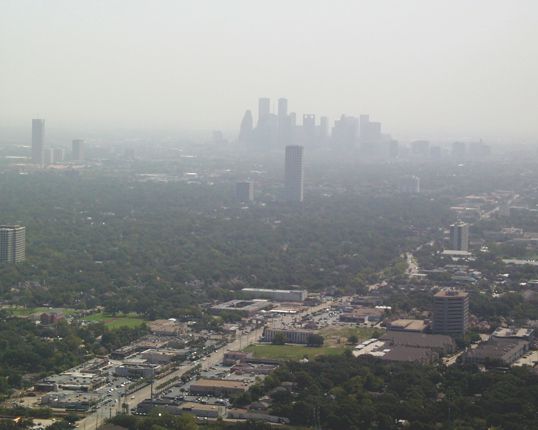Houston’s structures thwart cleansing breezes
DOI: 10.1063/PT.3.1208
Houston’s structures thwart cleansing breezes. On 30 August 2000, as the Sun beat down on Texas’s largest city, ozone concentrations soared to unhealthy levels. Usually in summer, as the city heats up, sea breezes blowing in from nearby Galveston Bay and the Gulf of Mexico refresh the air. But the prevailing winds over Houston, although mild, tend to counteract the sea breeze. Thus, if the breeze collides with the prevailing winds, stagnation sets in over the city and pollutants can build up. Now a numerical study led by Fei Chen of the National Center for Atmospheric Research suggests that the materials of the urban environment are partly to blame for ozone pollution. Chen and colleagues validated their computer model by comparing their simulation of the August 2000 pollution event against extensive data collected in the Texas Air Quality Study 2000. Then, to understand how various environmental features affect the development of the sea breeze, they simulated conditions that were wetter or dryer than normal, and in one simulation they replaced the urban landscape with cropland. The substitution of crops for concrete had the greatest impact on boosting the sea breeze and reducing periods of stagnation. (It also increased the efficacy of the nighttime land breeze that blows pollutants out to sea.) Compared with green space, the researchers found, the urban environment is hotter. That effect actually tends to enhance the sea breeze, but the enhancement is more than offset by the frictional damping from Houston’s buildings. (


